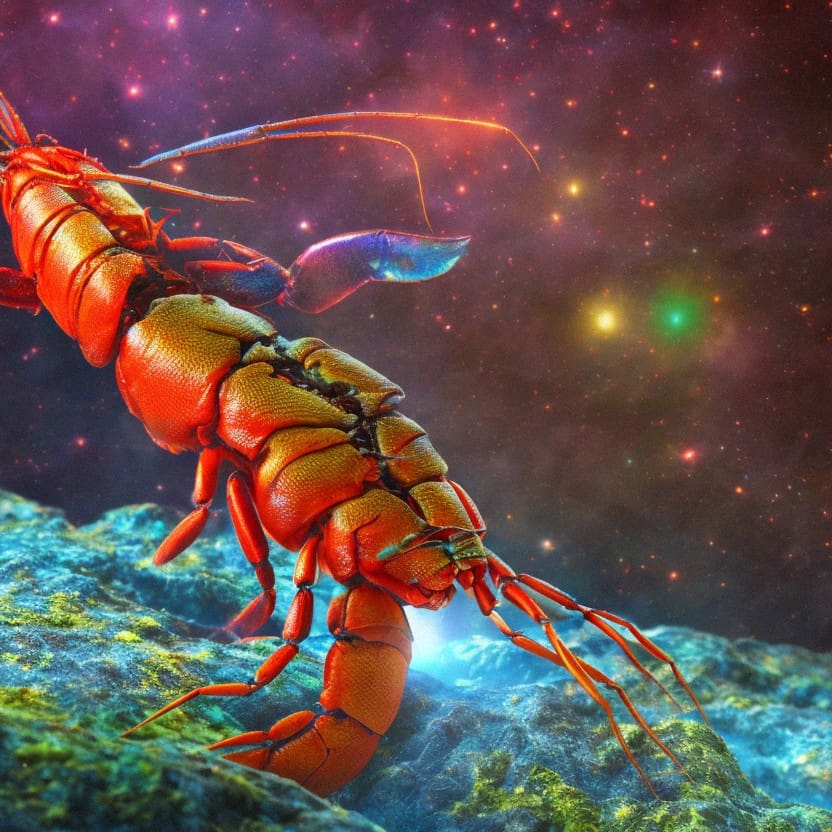Exploring the Fascinating World of Lobsters

Guest Post: Written by GenAI ( read the Behind the Scenes on this article )
Part of: AI Learning Series Here
Subscribe to JorgeTechBits newsletter
Lobsters are intriguing creatures that inhabit the depths of the ocean and have captured the curiosity of both scientists and seafood enthusiasts alike. In this extended blog post, we will delve deeper into the captivating life cycle, remarkable characteristics, various types, and lifespan of lobsters found around the world.
Lifespan:
Lobsters are known for their impressive lifespan. While their exact longevity varies among different species, lobsters can live for several decades. Some reports suggest that lobsters have the potential to live up to 100 years or more, given the right conditions. This makes them one of the longest-living marine creatures.
Molting and Shell Changes:
Lobsters have a unique ability to molt, shedding their old exoskeleton and growing a new one. This process is crucial for their growth and adaptation to the changing environment. Male lobsters typically molt once a year, while females molt every two years. During molting, lobsters become vulnerable and seek shelter until their new shell hardens.
Reproduction:
The reproductive process of lobsters is fascinating. Female lobsters release pheromones to attract male suitors for mating. Once a suitable mate is found, the female carries fertilized eggs on her abdomen for several months. She diligently tends to the eggs, ensuring their survival until they hatch into tiny larvae.
Types of Lobsters:
- Lobsters come in various types, each with its own unique characteristics and geographical distribution. Let’s explore some of the most notable types:
- Hard shell Maine lobster: Known for its succulent meat, this lobster is found off the coast of Maine, USA.
- Soft shell Maine lobster: During molting, this lobster has a soft shell, making it easier to eat.
- Canadian lobster: Commonly found in the Atlantic waters of Canada, it is known for its sweet and tender meat.
- European lobster: Found in the northeastern Atlantic Ocean, this species is highly valued for its flavor.
- Florida spiny lobster: Native to the warm waters of Florida and the Caribbean, it lacks the large claws of other lobsters but offers delectable tail meat.
- South African lobsters: Also known as rock lobsters, these species are found off the coast of South Africa and are popular for their rich, flavorful meat.
- Australian lobsters: Found in the waters surrounding Australia, they include species such as the Western rock lobster and the Southern rock lobster.
- California lobsters: These spiny lobsters are commonly harvested in California and are known for their delicate flavor.
Lifecycle:
The journey of a lobster from mating to adulthood is a lengthy process that can take up to 20 months. After hatching, the larvae float near the surface, going through several developmental stages. As they grow, they molt their exoskeleton multiple times. Eventually, they settle on the ocean floor and continue molting and growing until they reach maturity.
Lobsters are captivating creatures with a complex life cycle, remarkable characteristics, and a wide range of species. Their ability to molt and change shells, coupled with their intricate mating and egg-laying process, showcases the wonders of marine life. With various types of lobsters found across the globe, each offering its own distinct qualities and flavors, these remarkable crustaceans continue to intrigue and delight seafood enthusiasts worldwide. Moreover, their impressive lifespan adds another layer of fascination to these incredible creatures.

